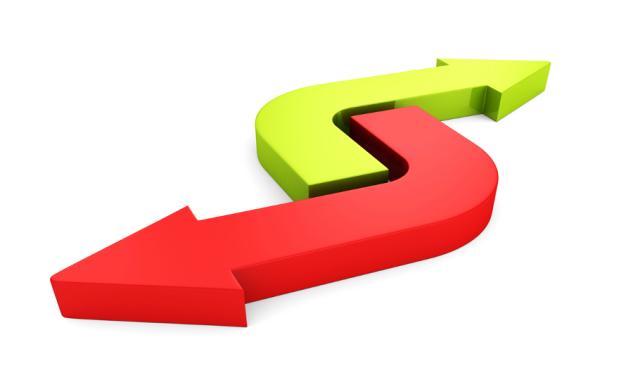
The colossal gas find discovered by Eni offshore Egypt could change the script in the country’s storied quest to develop its hydrocarbon resources, possibly shifting its status from gas importer and perhaps to exporter again.
That is if oil and gas companies, including the Italian major, are able to fulfill the needs of Egyptians.
Eni said on Aug. 30 that the “supergiant” gas discovery at its Zohr Prospect could hold 30 trillion cubic feet (Tcf) of gas. It is being hailed as the largest discovery made in the Mediterranean Sea offshore Egypt.
The discovery of the Miocene-age gas reservoir, with a deeper Cretaceous upside, comes as Egypt’s domestic energy demand rises, infrastructure ages and gas fields decline. The country is also trying to strengthen its gas sector following 2014 gas shortages that led to rolling blackouts, which have since eased, amid political instability.
The gas find couldn’t have come at a better time and better place, according to Jim Krane, an energy researcher and analyst at Rice University’s Baker Institute in Houston. During a phone interview with Hart Energy, Krane explained how Egypt was a gas exporter until recent years. U.S. Energy Information Administration (EIA) data show Egypt’s natural gas exports have fallen by nearly 30% annually since 2010.
The decline prompted Egypt to pursue gas import arrangements with neighboring Israel—where Noble Energy Inc. (NBL) and partners are developing huge gas discoveries Leviathan and Tamar—and LNG from Russia and Algeria.
Dry gas production in Egypt has tumbled 5% to 2 Tcf in 2013, nearly all of which was consumed domestically, the EIA said, despite having new discoveries almost every year. Consumption has increased by an annual average of 7% since 2004.
Egypt—now a net gas importer—has LNG terminals that are not being fully utilized. Eni could tap this underused liquefaction capacity to quickly treat gas for export.
“Eni has found a big field in a really ideal location,” Krane said. “It’s kind of serendipitous. It’s the biggest field in the eastern Mediterranean, and it is right near a bunch of underused LNG liquefaction capacity. So it’s kind of a twofer for Eni.”
But Eni must carefully negotiate terms if it hasn’t already, he warned.
“Egyptians are probably going to be putting pressure on Eni to bring as much of that gas into the country for domestic sales at below market rates,” Krane told Hart Energy. “Eni’s objectives and those of the Egyptian government are going to be in conflict.”
Eni will need to export as much gas as possible to fully monetize the gas find, he added.
However, it may be about eight years before Zohr will become export ready, analysts said Sept. 1 in a Reuters article on how the Zohr discovery could impact Israel’s gas projects. Production has already started at the Tamar Field, and Leviathan is scheduled to go online in 2019. Eni said Zohr could go into production late next year and reach full output in four years, according to Reuters, which noted analysts doubt the short time frame.
“I don’t see this as directly harmful to Leviathan's prospects for development,” Brenda Shaffer, an energy specialist at Georgetown University and the University of Haifa, told Reuters. “The timing is not bad for Israeli companies. It’s better now than after two years of negotiations [with potential buyers of Israeli gas].”
Krane said there may be a way for Israel to export some gas to Egypt in the short term before the Zohr Field is fully brought online.
“Egypt has been in such a tight spot politically and in terms of its energy situation for the past five and a half years, this couldn’t have come at a better time Egypt,” he added.
The discovery well, Zohr 1X NFW, was drilled to a total depth of about 4,131 m (13,553 ft) and hit 630 m (2,067 ft) of hydrocarbon column in a carbonate sequence of Miocene age with excellent reservoir characteristics (more than 400 m of net pay), Eni said in a news release. Zohr’s structure has also a deeper Cretaceous upside that will be targeted in the future with a dedicated well.
“This historic discovery will be able to transform the energy scenario of Egypt,” Eni’s CEO Claudio Descalzi said in a prepared statement.
Eni, through its subsidiary IEOC Production B.V., holds 100% of the contractor’s working interest in the Shorouk Block, where the field is located, and is the operator of the concession.
Velda Addison can be reached at vaddison@hartenergy.com or via Twitter @veldaaddison.
Recommended Reading
ONEOK, MPLX’s ‘Wellhead-to-Water’ Deal Dominates Permian NGL Race
2025-04-10 - The $1.75 billion ONEOK-MPLX deal reflects how midstream companies are going big in the petrochemicals sector.
Targa Buys Back Bakken Assets After Strong 2024
2025-02-20 - Targa Resources Corp. is repurchasing its interest in Targa Badlands LLC for $1.8 billion and announced three new projects to expand its NGL system during its fourth-quarter earnings call.
MPLX Acquires Remaining Interest in BANGL for $715MM
2025-02-28 - MPLX LP has agreed to acquire the remaining 55% interest in BANGL LLC for $715 million from WhiteWater and Diamondback.
ArcLight Completes $865MM Deal for Phillips 66’s Stake in NatGas Line
2025-02-03 - Kinder Morgan will continue to operate the Gulf Coast Express as a project to increase the line’s capacity moves ahead.
Intensity Infrastructure Partners Pitches Open Season for Bakken NatGas Egress
2025-02-04 - Analysts note the Bakken Shale’s need for more takeaway capacity as Intensity Infrastructure Partners launches an open season for a potential 126-mile natural gas transport line out of the basin.
Comments
Add new comment
This conversation is moderated according to Hart Energy community rules. Please read the rules before joining the discussion. If you’re experiencing any technical problems, please contact our customer care team.





